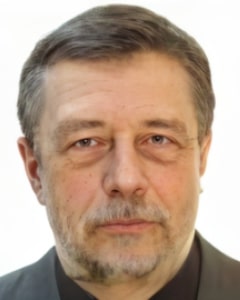 |
Vladimir EgorovFSRS "Crystallography and Photonics" Rus Acad Sci, Photochemistry CenterQuantum-classical Mechanics And Nature Of The Franck-condon Principle Poeppelmeier International Symposium(3rd Intl Symp on Solid State Chemistry for Applications & Sustainable Development) Back to Plenary Lectures » |
Abstract:As is known, quantum mechanics is inextricably linked with classical mechanics. Its justification is connected with the need to consider the interaction of a microparticle with a macroscopic classical measuring device [1]. The basic dynamical equation, the Schrödinger equation, was postulated by Schrödinger but actually derived from the Hamilton-Jacobi equation for action in classical mechanics by introducing the wave function in some form, which is now called the semiclassical approximation. The width of the levels, "inside which" the energy spectrum is continuous, is a sign of the partially classical nature of the dynamics in quantum systems. Quantum-classical mechanics is not a "mixture" of quantum mechanics and classical mechanics, but is a substantially modified quantum mechanics, in which the initial and final states are quantum in the adiabatic approximation, and the chaotic transient state due to chaos is classical. The Franck-Condon principle in molecular physics avoids the consideration of transient state dynamics, which is unreasonably assumed to be unimportant. Classicality, which is immanently inherent in quantum mechanics itself, in molecular physics, is supplemented by classicism, which is associated with the Franck-Condon principle. It is assumed that the fast quantum transition of an electron from the ground to the excited electronic state of the molecule occurs between the turning points of classically moving nuclei, where the nuclei are at rest. In fact, the classical nature of motion in molecular physics is not associated with the Franck-Condon principle, but with the chaotic dynamics of the motion of an electron and nuclei in a transient state. As is known, the theory of quantum transitions in quantum mechanics is based on the convergence of a series of time-dependent perturbation theory. This series converges in atomic and nuclear physics, as well as in molecular physics, provided that the Born-Oppenheimer adiabatic approximation and the Franck-Condon principle are strictly observed. If this condition is not met, the series of time-dependent perturbation theory diverges. Obviously, in real molecules, the adiabatic approximation is not strictly observed, which makes the application of Franck-Condon principle unfounded in theory, and with it the whole physical picture of molecular transitions based on it. The only physical way to eliminate the singularity of the series of time-dependent perturbation theory in molecular physics is the postulate of the presence of dynamics in the transient electron-nuclear(-vibrational) state, which the Franck-Condon principle ignores, and that this dynamics is chaotic. In this case, in the case of strong chaos, as in the case of the Franck-Condon picture of molecular transitions, the transition rates do not depend on the specific dynamics of the transient state, but depend only on the initial and final states, taken in the adiabatic approximation. In the case of weak chaos, against the background of chaos, the regular nature of the dynamics of the transient state manifests itself. Chaos, which is weak in the case of large molecules, may be strong in the case of small molecules. Therefore, the Franck-Condon picture of transitions often gives good agreement with experimental data on optical spectra in conventional molecular spectroscopy of small molecules. In photochemistry, where, as a rule, we deal with large molecules, where chaos is not strong, but weak, elements of dynamic self-organization often appear in the chaotic dynamics of the transient state. A striking example of this is the well-known narrow and intense J-band of J-aggregates of polymethine dyes [2]. Thus, in the case of small molecules, the Franck-Condon principle gives the correct result, although an erroneous theory and an erroneous physical picture are used. In the case of large molecules, this erroneous theory and the erroneous physical picture no longer lead to the correct result. The analogue of this situation is the collision between two pictures of the world, namely, geocentric and heliocentric. As is well known, the correct picture is the heliocentric picture of the world, in which the Earth rotates around its own axis. However, being on the surface of the Earth, this rotation is perceived by the observer as the movement of the Sun across the sky, which is well simulated by an erroneous geocentric picture. The exit from the surface of the Earth to a sufficiently large distance into space directly shows the fallacy of the geocentric picture of the world. This is analogous to the transition from the transient state dynamics in standard optical spectroscopy, which is strongly chaotic in small molecules and therefore insignificant, to the transient state dynamics in photochemistry, where elements of regular motion appear for large molecules against the background of transient chaos (dozy chaos [3]). |
|